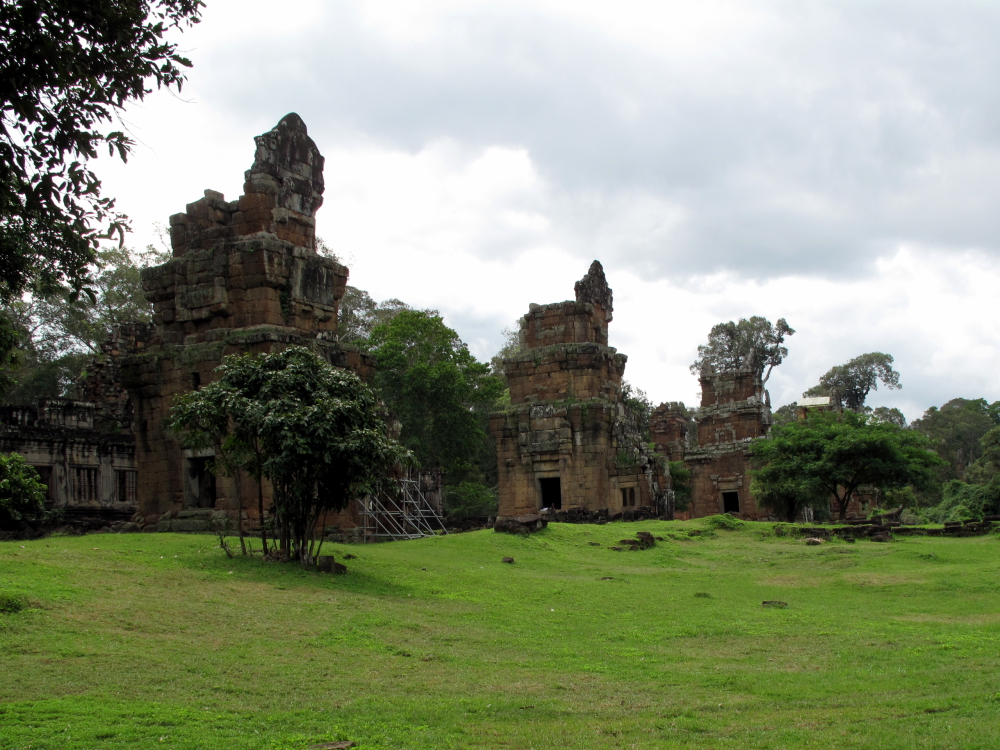 The Prasats Sour Prat
The Prasats Sour PratAcross the large open space that one imagines to be some sort of parade grounds from the Terraces of the Elephants and the Leper King stand 12 more or less identical towers. The exact function of the structures, and even their construction date, remains unclear.
The Chinese diplomat Zhou Daguan wrote that the towers were part of the Khmer's judicial system. According to him, each of the complaintants in any dispute was locked in one of the tower for some period of days. When released, one of them will show signs of some disease or illness, and thus be judged the guilty party.
There's also a local legend that ropes were strung between the towers for acrobatic performances. The more mundane, although perhaps more likely, use for the buildings may have been as altars for each of the provinces, used on special occasions such as taking the oath of loyalty to the king.
The Kleangs
 One of the Kleangs
One of the KleangsBehind the Prasats are two structures referred to as the Kleangs, which means "storehouse". The Kleangs present stately facades, and the southern building is little more than that, as it appears to have never been completed. Within the northern Kleang is a small cruciform structure set in a larger courtyard.
The Prasats and Kleangs are best visited in the afternoon, together with the Preah Pithu group and Preah Palilay.